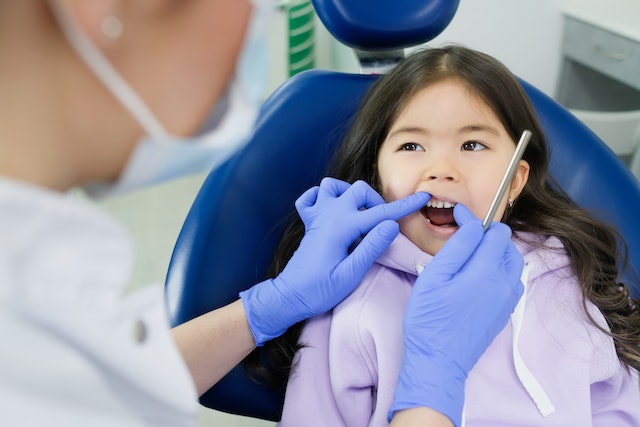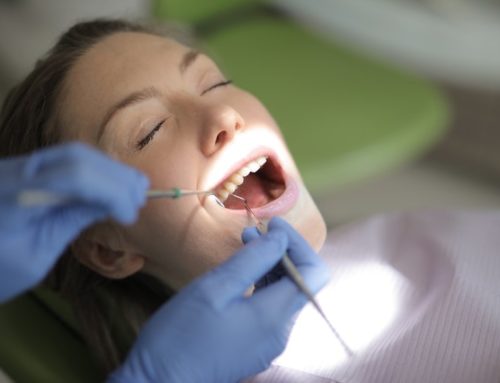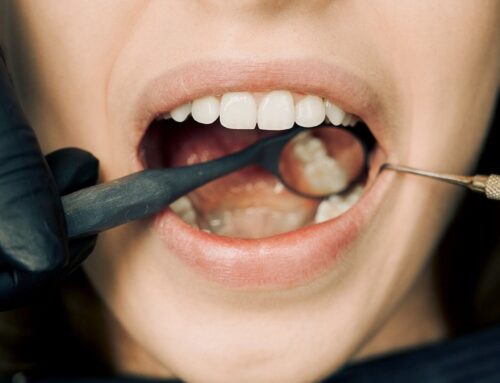The term “gum disease” – or gingivitis – is used to describe the inflammation of the gums. In its late stages, gum disease is also called periodontal disease. Gums play a vital role in our oral health. Healthy gums are pink, firm and do not bleed when flossed or brushed.
If you or your child have swollen gums or gums that bleed when you brush or floss, you may be suffering from gum disease or gingivitis. If gingivitis symptoms do not go away after three to four days of careful teeth cleaning, make an appointment with your dentist. Untreated gum disease can lead to tooth loss and other health issues.
Causes of Gum Disease
Getting children and teens to develop healthy oral hygiene practices can be challenging. If you don’t keep an eye on them, they might not brush or floss as often as they should.
Brushing and flossing help rid the mouth of harmful bacteria. If bacteria is left to accumulate, it creates a sticky covering on the teeth and around the gumline, called plaque. Eventually, plaque can harden to form tartar, which attracts even more bacteria, causing gums to become irritated and swollen.
Several factors increase a child’s chances of developing gum disease, including juvenile diabetes, genetics, bruxism, autoimmune disorders and certain medications.
Symptoms to Watch
If your child has any of the symptoms below, they may have gum disease or be at risk of developing it. Potential signs of gum disease include:
- sensitive teeth
- loose teeth
- receding gums
- sensitive or bleeding gums
- red or swollen gums
- bad breath
- pain when chewing
How to Treat Gum Disease
Call your local dental clinic if your child’s gums become painful and inflamed or experience persistent bleeding over four days. Your dentist will inform you how to manage gingivitis and prevent it from worsening.
Parents can help manage and prevent gum disease at home by:
- ensuring children brush their teeth and gumline twice a day
- providing an interdental brush or floss, toothpaste with fluoride and a soft-bristled brush
- making sure kids and teens have healthy snacks
- scheduling regular appointments for teeth cleaning
Sometimes, kids’ teeth and gums need special treatment from a dentist or a periodontist. Let’s look at some other ways dentists can treat gum disease:
Antibiotics
Antibiotics and other medications are used in conjunction with scaling and root planing or curettage surgery to stop the spread of infection and inflammation. Your dentist may administer antibiotics as a standalone treatment. Treatment comes in several forms, including oral medication and topical gels.
Surgery
In advanced gum disease, gums become weak and cause teeth to become loose. Treatment by surgery is one way to help combat the effects of gum disease. The dentist may cut open and clean badly affected sections of the gum. Then will stitch the gum back into place to fit more tightly around the teeth.
Scaling and Root Planing
This deep cleaning process, also called deep cleaning, removes plaque and tartar from below the gumline. Teeth scaling and root planing are typically completed in the same dental visit. However, getting all the teeth and gums completely cleaned can take more than one appointment.
Gingival Grafting
In gingival grafting, healthy gum tissue is removed from other areas of the mouth to replace the diseased gum. The healthy gum is then stitched back together. This treatment anchors the teeth and improves appearance.
Your Dental Clinic in Surrey
If your child’s gums show signs of gingivitis, contact Newton Village Dental Clinic. Our experienced team is here to address your concerns and oral health needs.
Contact us at 604-599-4777 or via our online form to request an appointment.





